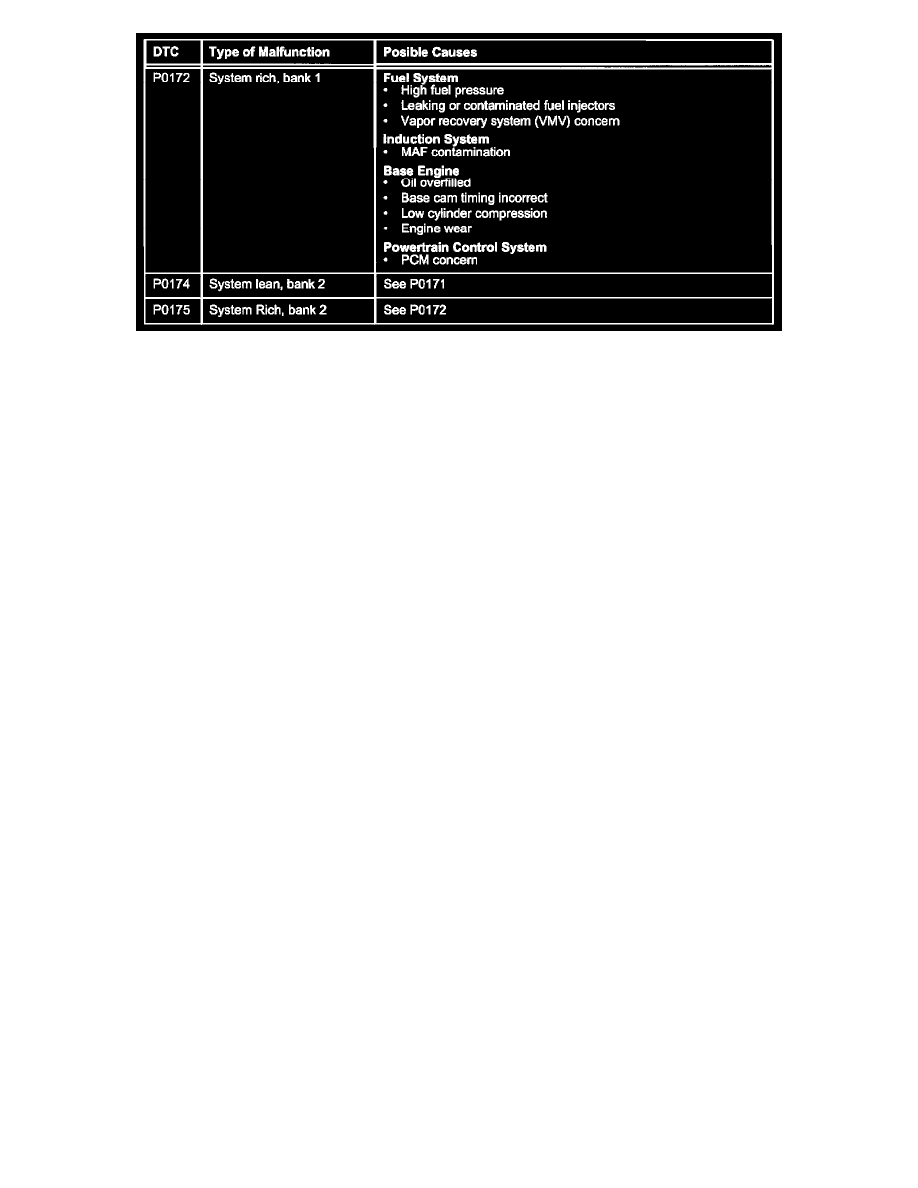B3000 SE Regular Cab 4WD V6-3.0L OHV (1998)

Fuel System Monitor DTC's
Fuel System Monitor Service Tips
^
P0171, P0172, P0174, P0175: These DTCs are not likely caused by HO2S failures. The majority of HO2S returned under warranty for repairing
these DTC's are found to be functioning normally. Additional related DTCs are usually present when there is a concern with an H02S. These DTCs
are never the result of a problem with a down-stream HO2S. Always look for a condition related to the rich or lean failure.
^
Lean Conditions & Vacuum Leaks (Un-Metered Air): Suspect a vacuum leak if the Freeze Frame Data indicated the fault at idle or low speed. The
MAF sensor signal may drop below normal and the Idle Air control may be operating at its upper limit. A lean condition can be caused by
un-metered air leaks (leaks between the MAF and the intake manifold). Examples of possible leaks are: loose, damaged vacuum lines, intake
manifold gaskets or 0-rings, throttle body gaskets, brake booster hoses or diaphragm, air inlet tube, stuck or frozen PCV valve, unseated engine oil
dip stick, partially blocked air filter or MAF inlet.
^
Lean Conditions & Insufficient Fueling: Suspect a restricted fuel system if the Freeze Frame Data indicated the fault at high engine load or throttle
position. Restricted fuel concerns will usually be more apparent at high engine load and may be accompanied by concerns of lack of power or poor
acceleration. Checking fuel pressure under load is a good place to start. Examples of possible causes of low fuel pressure or fuel starvation are: weak
fuel pump, plugged filter, fuel leaks, restricted fuel supply line, contaminated or plugged fuel injectors.
^
False Lean Conditions / Exhaust Leaks: A leak around the HO2S will cause the PCM to sense a false lean condition. This can be caused by leaks
upstream near the HO2S or by secondary air malfunctions.
General OBDII Service Tips
^
Always Record Freeze Frame Data Before Clearing DTCs: The FFD is a valuable tool for identifying engine operating conditions present when a
DTC set. This will help you verify a vehicle concern and validate your repair attempt.
^
Reset KAM After Repairs: After at repair involving clearing DTCs, always clear the KAM. The KAM holds memory of specific vehicle operating
conditions used for its adaptive strategies. If the KAM is not cleared the PCM may remember operating conditions present before your repairs.
^
Diagnosing Multiple DTCs With Similar Meanings: When paired DTC's with similar descriptions for HO2S concerns are set (P01351 P0155),
(P01411 P0161), (P11311 P1151), (P11321 P1152) it is unlikely that replacement of the HO2S will correct the concern.
